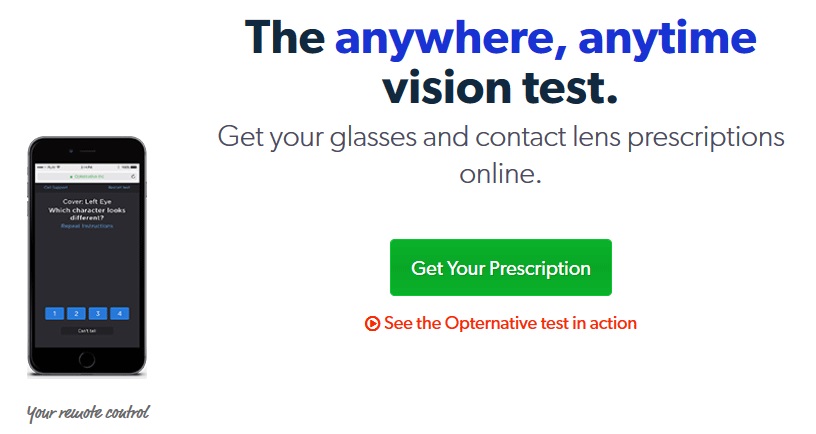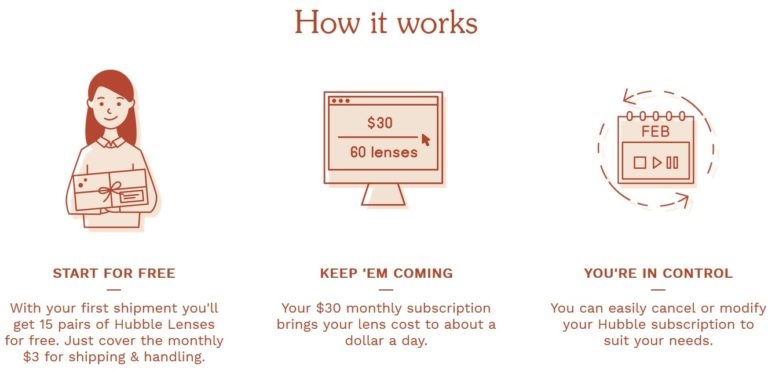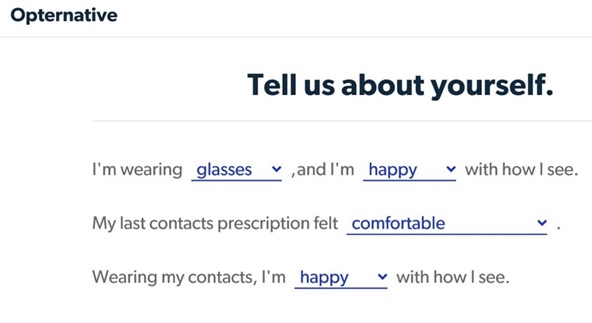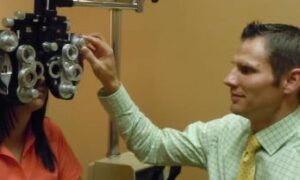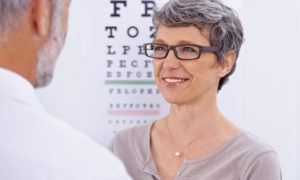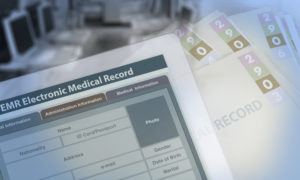Nov. 29, 2017
“Online eye exam” offerings like Opternative, Prescription Check by Warby Parker and Simple Contacts represent efforts by enterprising entrepreneurs to generate eyeglass and contact lens prescriptions remotely without the user having to step into a doctor’s office. These new services challenge regulations and the sensibilities of eyecare professionals. Will they harm your practice and patients, or are these concerns overblown?
In the last few months, I have used Opternative, Prescripton Check and Simple Contacts. In their current state, I can confidently say that the large majority ODs will not use them to get their own prescriptions. In other words, these offerings don’t pass the “dogfooding” test, as it’s known in the tech industry. Quite simply, these online services are not good enough compared to established methods for updating prescriptions. Still, there are merits behind these offerings, which I share here, along with my revelations about this new category.
How Does Online Refraction Impact Perception of ODs?
It’s no secret that these online eyeglass and contact lens distributors view the remote generation of eyeglass and contact lens prescriptions as their secret weapon to increase sales. They do this by hiring ophthalmologists to renew prescriptions behind the façade of the technology’s user interface. Many eyecare professionals are irked by how these online companies suggest that eye doctors in traditional practice settings are unneeded, inconvenient and expensive middlemen.
The fight to control public perception has started, with these online companies fanning the flames of those already throwing shade at optometrists. Meanwhile, organized optometry has taken a stance that these technologies do not supplant in-person examinations, and they can fail to diagnose important health conditions. American Optometric Association filed a formal complaint with the FDA against Opternative in 2016.
More than a dozen states now regulate online sight testing. Adding further intrigue, Opternative is now suing Warby Parker for allegedly stealing their online refractive evaluation.
Prescription Renewal is a New Service Category
These tests are all free to take, and just require registration. You are only charged if you want to receive a prescription. It’s $50 to receive an eyeglass or contact lens prescription ($60 for both) through Opternative; $40 for an eyeglass prescription through Prescription Check; and $20 for a contact lens prescription through Simple Contacts.
To the consumer, these online refraction services might seem like a good deal with the median eye exam cost paid by direct-pay patients at $127 in 2010, but perhaps only until they learn the limitations of these services.
Spoiler alert: Even though some refer to these as “online eye exams,” most users should quickly realize that they don’t hold a candle to a comprehensive eye exam. Instead, these services are limited to renewing an old contact lens or eyeglass prescription through duplication or by minimal modification. These services are not good enough to generate most eyeglasses prescriptions de novo, and they are completely unable to generate contact lens prescription de novo.
Therefore these services request the user to provide their old eyeglass or contact lens prescription. With Opternative and Simple Contacts, the user must remain in their existing brand of soft contact lens, although there are no apparent mechanisms to prevent falsification of their old prescription, their age, systemic or ocular disease status, or state of residence.
By comparison, Prescription Check uses the iPhone or iPad’s GPS to detect state of residence, and requires uploading a photo or scan of the prior eyeglass prescription. It is noteworthy that these online prescription renewal services cherry-pick low-risk users by excluding children, the elderly and those with complex prescriptions, suspicious symptoms, and known disease.
Both Opternative and Prescription Check use the smartphone as a remote control for displaying the tests on a separate computer screen. Opternative texts a code to the phone so that the phone can sync with the computer screen.
Prescription Check displays a 3D bar code on the computer screen which the iPhone or iPad detects to sync. Both Opternative and Prescription Check asks the user to place a credit card against the computer screen for size calibration. To achieve the proper test distance, Opternative asks for the user’s sex and shoe size to advise how many steps to stand away from the computer screen.
For example, a man wearing a size 9.5 shoe is told to take 12 heel-to-toe steps away from the computer. By comparison, Prescription Check uses a checkerboard pattern on the computer screen, which when detected by the user’s iPhone or iPad, guides the user to stand 11 feet away. The actual refractive measurements seem unsophisticated. Both Opternative and Prescription Check use the duochrome test to assess spherical defocus. For astigmatism and axis, Opternative use a force-choice test of paired orthogonal gratings at different angles, whereas Prescription Check uses a modified fan dial.
Simple Contacts takes a different approach, stating up-front that it is a renewal and re-order service only. It’ll take a prior contact lens prescription, and will not even modify the prescription at all. The app records video of the user’s eyes in various fields of gaze in what it calls its “redness test,” performs a visual acuity test where the phone listens for the user’s voice to correctly read displayed letters (20/20 equivalent) from 10 feet away, and asks the user to confirm the absence of any abnormalities that would otherwise put the brakes on renewal. Simple Contacts asks these questions:
• “Do you see clearly in your contact lenses?”
• “Do you have any pain or discomfort in your contact lenses?”
• “Do you understand that this is a vision test only and not a substitute for a dilated eye health exam?”
• “Do you have any of the listed health conditions?” It is followed by a list of conditions including cataracts, glaucoma and keratoconus. It also includes in the list, “Taking a medication that affects your vision” and “Any illness that affects ocular health (ask your doctor).”
If the user doesn’t answer “correctly,” the app will display, “Oh, no! Our test is designed for low-risk patients without a history of eye-health issues. Based on your answer, it may be better for you to see a doctor for a full exam.” However, the user can hit the “back” button to revise or falsify the answer, to still receive their duplicated and renewed contact lens prescription.
Patients Underestimate Their Risk for Eye Disease
As a clinician, I found the user-reported nature of these online services unsettling because of what’s known as self-serving health bias. That’s to say, people are unrealistically optimistic that they are less prone to health risk than others. For example, people believe they are less susceptible to the flu than others. In the same way that 93 percent of drivers believe they are better than average, a statistical impossibility, users of online refractive tests likely self-assess their vision and eye health more positively than they should.
Indeed, eyecare professionals routinely see patients who deny any symptoms, or visual changes, although their examinations reveal otherwise. The online refractive services exploit the consumer’s weakness of believing that they are less prone to eye health problems and visual changes than in reality. Unfortunately, this strategy runs counter to protecting the welfare of their users.
Patient Perception of Knowing What They Need is Not Accurate
Another fallacy of online sight tests is that they take advantage of the cognitive tendency of humans to assume that they understand complex phenomena with greater precision, coherence and depth than they really do. However, this cognitive bias is invalid. When people are asked to explain their understanding in detail, the gaps in explanation manifest. For example, patients will often complain that their eyeglass prescription is too weak, yet they will have difficulty explaining how they know this. In such cases, it’s not unusual for their eyeglass prescription to in fact be too strong, or for undetected eye disease to underlie the complaint. Still, Opternative asks certain users whether they believe that their eyeglass prescription is too weak or too strong, and to use their response to guide what’s put in their new prescription.
The Challenge Ahead
In my judgment, the existing online refractive evaluations aren’t good enough to upend traditional refractive eyecare. Because of this, they seek to extend the expiration of a pre-existing prescription without making substantive changes.
Even so, there is notable consumer demand for prescription renewal without an in-person examination. The online companies’ narrative plays up saving people money and greater convenience. The irony is that many doctors, myself included, are happy to extend a prescription under reasonable circumstances, which would save the patient the time and expense from using one of these online services.
While the current online offerings fall short, they forebode improved technology ahead. For example, EyeNetra and SV One may have the potential to enable remote de novo prescribing. Maybe eye doctors will embrace these future offerings for themselves and their patients.
Will online prescription renewal spur you to more generously offer prescription extensions?
 Brian Chou, OD, FAAO, directs a referral-based keratoconus clinic at EyeLux Optometry in San Diego, Calif. He also serves as an expert witness for medicolegal claims involving optometric standard of care. To contact him: chou@refractivesource.com.
Brian Chou, OD, FAAO, directs a referral-based keratoconus clinic at EyeLux Optometry in San Diego, Calif. He also serves as an expert witness for medicolegal claims involving optometric standard of care. To contact him: chou@refractivesource.com.

